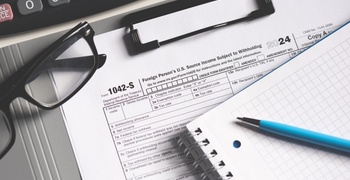How to tax recurring subscription sales of software and SaaS
Though it’s still possible to purchase software in a physical box, software is primarily sold as a digital download or cloud service. The shift from physical to digital sales of software and software as a service (SaaS) has caused selling models to evolve: Instead of charging one price for an off-the-shelf purchase or one-time service, companies charge customers recurring subscription fees for access to applications or platforms. Determining the tax due on recurring and subscription sales has become an acute pain point of tax compliance for SaaS and software companies.
The challenge of SaaS and software taxability
Sales tax rules for software and SaaS vary considerably from state to state, which makes taxability complex and difficult to manage: These products and services are taxed 450 different ways across 45 categories. It’s often tough for businesses to determine the taxability of SaaS and software because state sales tax laws haven’t kept up with changes in technology. Just as states determine how to tax one new type of product or service, a new type comes along.
The taxability of software products may change depending on delivery model (physical or digital): In some states, physical sales of software are taxable but digital sales of software are exempt. Where tax applies to digital sales, it can be difficult to determine the proper rate to charge because rates can be based on the location of the customer, the vendor, or even the server.
Custom-built software is often taxed differently from prewritten software or packages that combine custom and prebuilt software. Training and support services can affect taxability too, as can using field sales or support contractors or staff. Adding recurring and subscription sales to the mix further complicates taxability.
Recurring billing vs. subscription billing
Recurring billing and subscription billing are similar but not the same.
With recurring billing, the customer provides the seller with payment information such as a credit or debit card. The seller then automatically charges the customer for goods or services on a prearranged schedule; no further permissions are needed.
Recurring billing can be either fixed or variable. With a fixed recurring payment, the payment is the same every cycle (e.g., weekly, monthly, quarterly, annually, or custom). The variable recurring system allows for differences in billing amounts. For example, a payment management provider may use variable recurring billing because the amount of each bill will vary depending on the number of transactions made.
With subscription billing, consumers are billed for products or services on a time-determined basis, such as on the first or 10th day of the month, but they generally control the payments — they don’t need to share confidential credit card information with the seller. Furthermore, they can pay in advance or use a different payment method each payment cycle.
Subscription billing is generally the preferred model for SaaS products, mobile app providers, and companies selling recurring digital downloads or downloadable games.
Common sales tax issues for recurring and subscription billing platforms
With recurring and subscription sales, bill runs automatically gather information from customer accounts to generate hundreds or thousands of customer invoices on a set schedule. Thus, systems must be able to generate one-off invoices outside of bill runs and handle credit memos, invoice adjustments, and refunds. And of course, systems must be able to assign the proper rate of sales tax to each sale and account for sales tax exemptions.
Traditional one-time purchase models generally use the primary address for the buyer to source tax jurisdiction(s) for tax determination and calculation. However, subscription models for SaaS and software sales often base tax on the location of where the service or software is consumed. Therefore, sellers generally need to know the physical address of all buy locations consuming the subscription.
Other complicating factors for managing sales tax for recurring and subscription sales include mass address validations, refunds, product/service returns, and credit memos. Since every billing cycle inevitably includes adjustments and one-offs, batch systems must be able to handle single invoice adjustments via a dynamic tax calculation request. Single refunds and credit memo generation are always facilitated via dynamic tax calculation request regardless of bill run processing model.
And of course, one invoice error during a bill run shouldn’t prevent all other invoices from processing successfully.
SaaS companies often scale quickly because their product offerings only require a customer to have access to a browser to subscribe. Because of this, and new economic nexus laws, the compliance burden for SaaS companies can increase in a short period of time.
Economic nexus creates new tax collection obligations for software and SaaS companies
Companies that sell software and SaaS need to be able to get sales tax right because they’re increasingly required to collect and remit it.
Sales tax nexus — the connection between a state and business that enables the state to tax the business’s sales — used to be based primarily on physical presence in a state. That changed, however, when the Supreme Court of the United States overruled a long-standing physical presence rule in South Dakota v. Wayfair, Inc. (June 21, 2018).
Although physical presence in a state still establishes sales tax nexus, businesses no longer need to have a physical presence in a state for the state to tax its sales. The Wayfair decision authorizes states to base a sales tax collection obligation on economic activity alone. This is known as economic nexus.
Economic nexus laws are now enforced in 43 states, as well as the District of Columbia and many local governments in Alaska (there’s no statewide sales tax in Alaska, but local sales taxes exist). Generally, remote sellers are required to register once their sales in a state exceed the state’s economic nexus threshold. Many states have a threshold of $100,000 in sales or 200 transactions in the current or previous calendar year, but some of the most populous states, including California and Texas, have a threshold of $500,000 in sales.
Although some economic nexus thresholds are based solely on tangible personal property, other thresholds count intangible property or services, including digital goods and services like software and SaaS. Details about each state’s thresholds can be found in this state-by-state guide to economic nexus laws. Taking a Sales Tax Risk Assessment can help you determine where you have an obligation to collect sales tax.
For businesses with a physical presence or economic nexus in multiple states, sales tax can be difficult to manage even for one-time charges of digital downloads or software. Compliance complexity only increases for sales with recurring or subscription billing.
Avalara’s cloud-based tax compliance solution for software and SaaS businesses helps thousands of software companies worldwide automate the costly, manual processes associated with collecting and remitting tax on sales of software products and services.

The Avalara Tax Changes midyear update is here
Trusted by professionals, this valuable resource simplifies complex topics with clarity and insight.
Stay up to date
Sign up for our free newsletter and stay up to date with the latest tax news.














